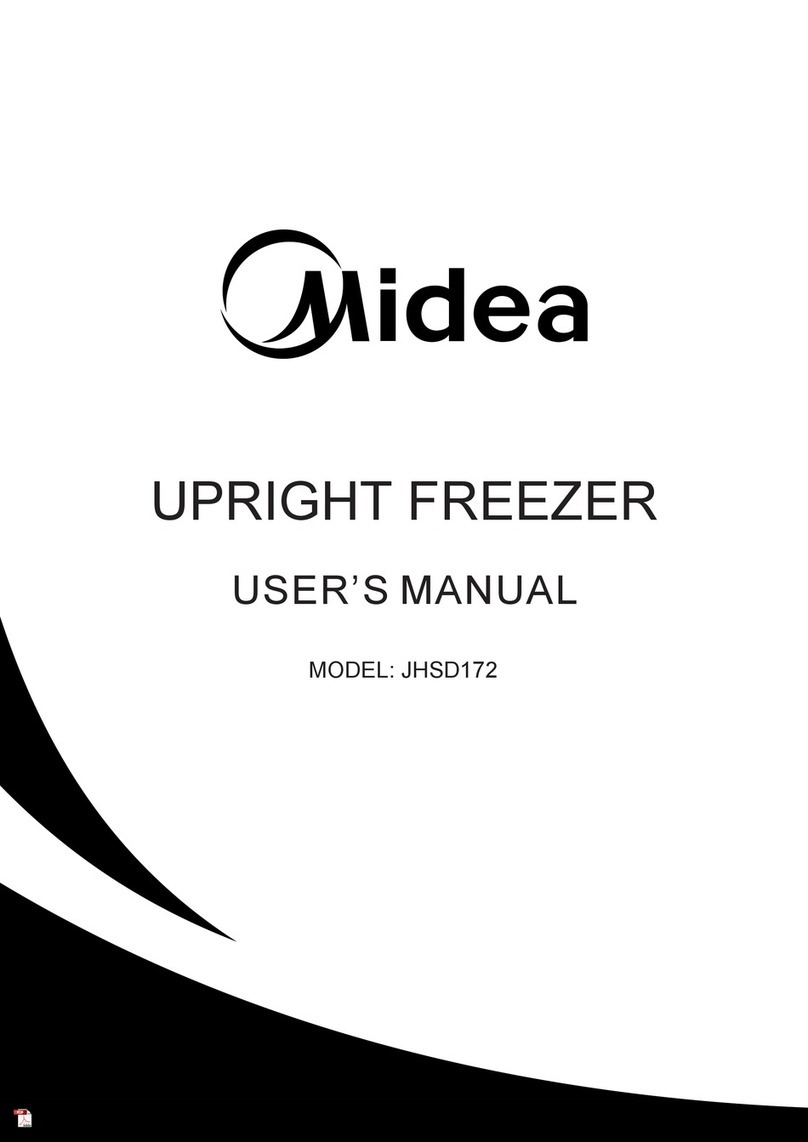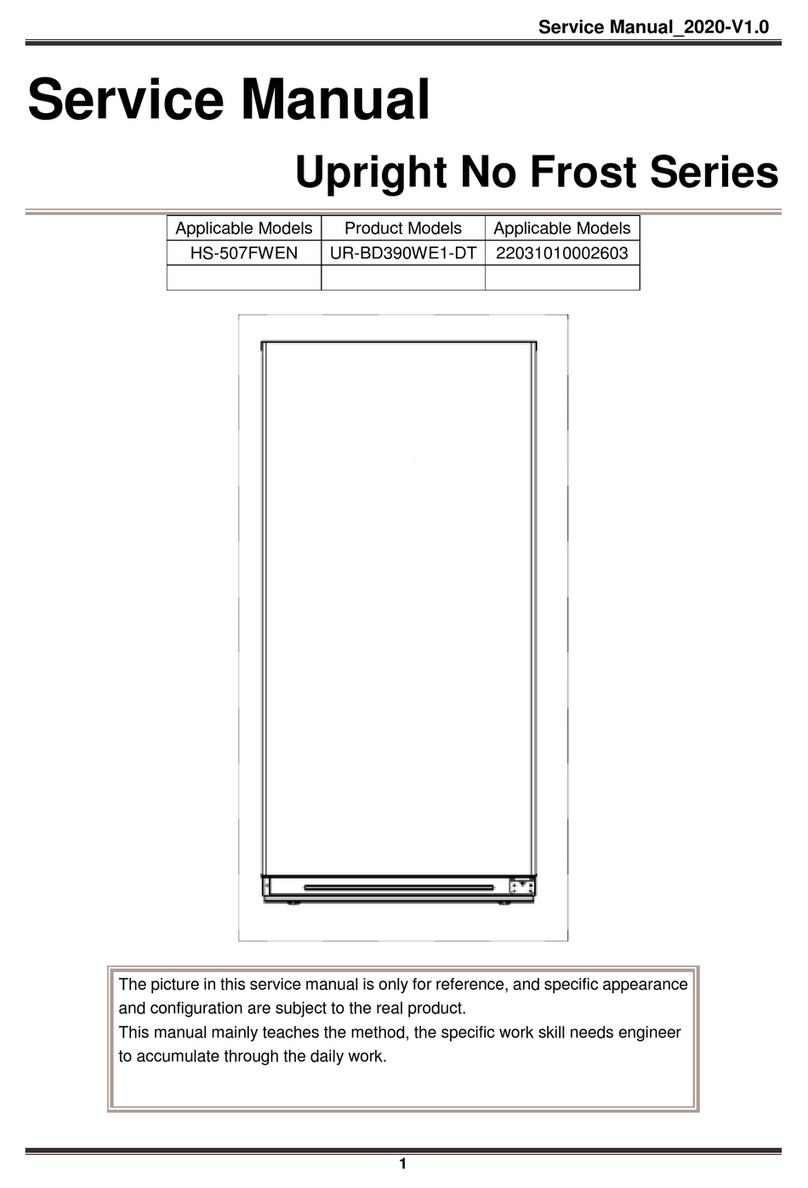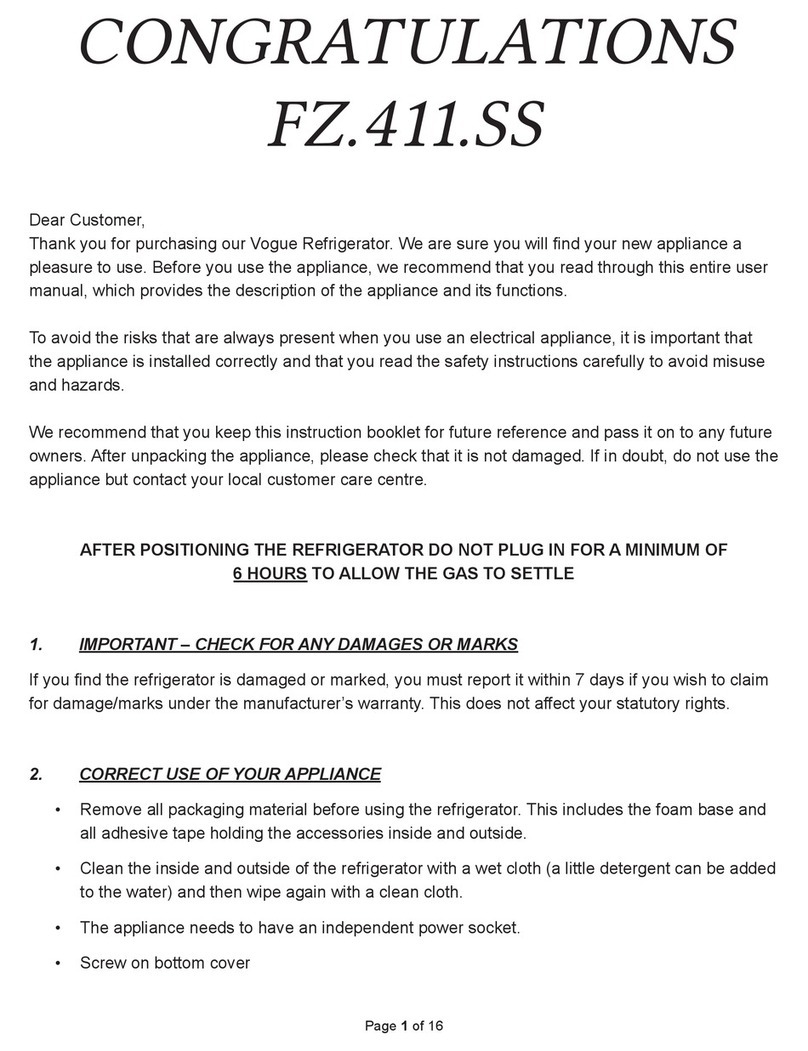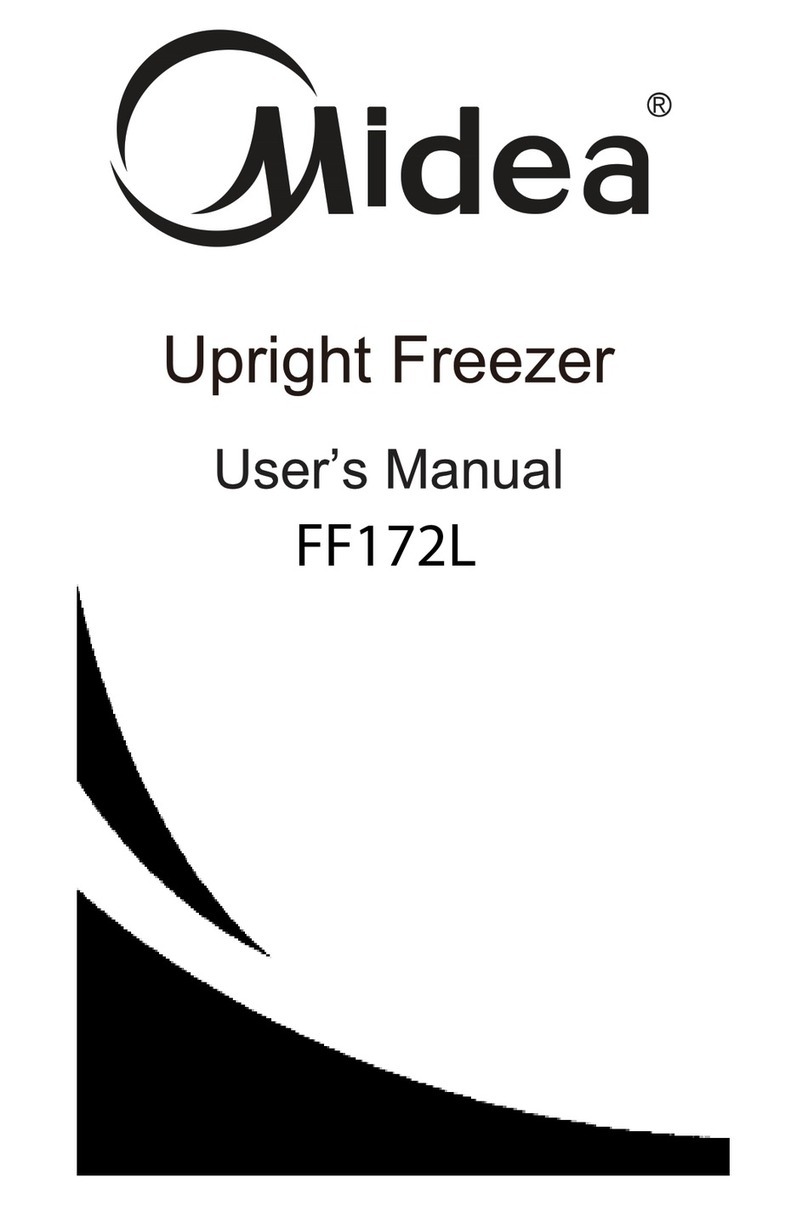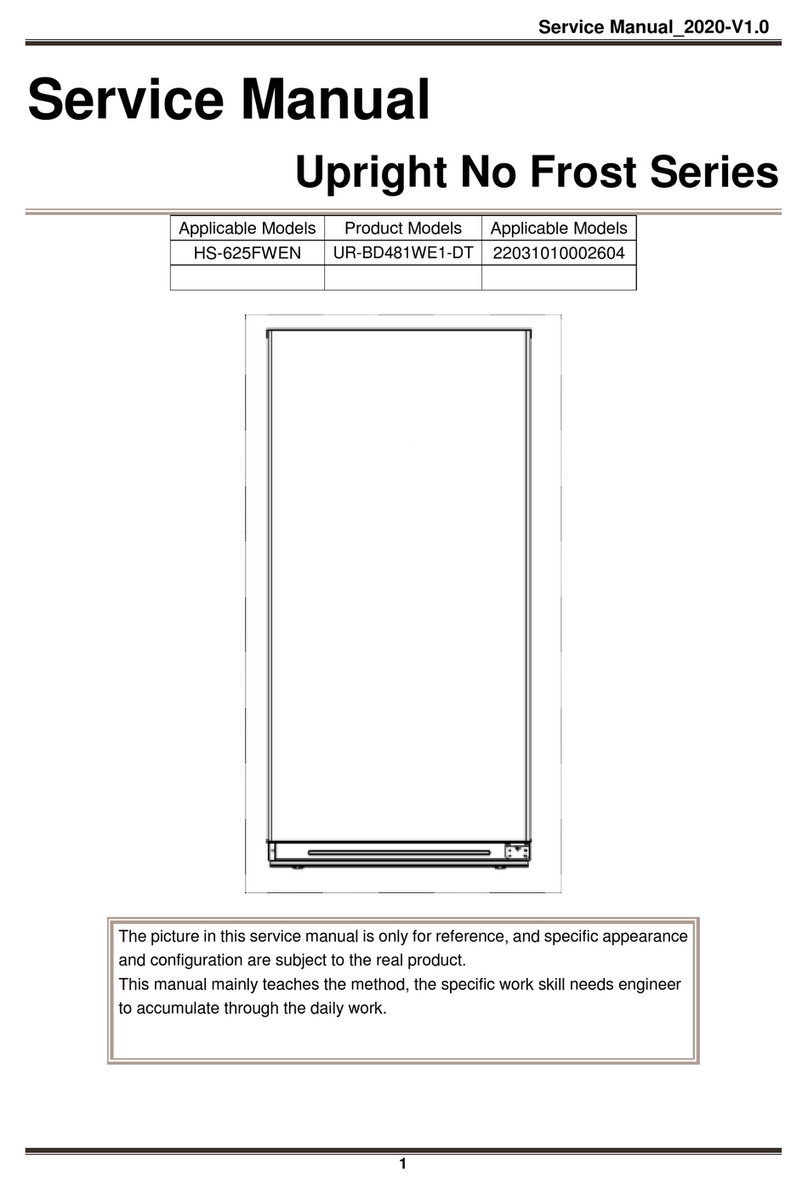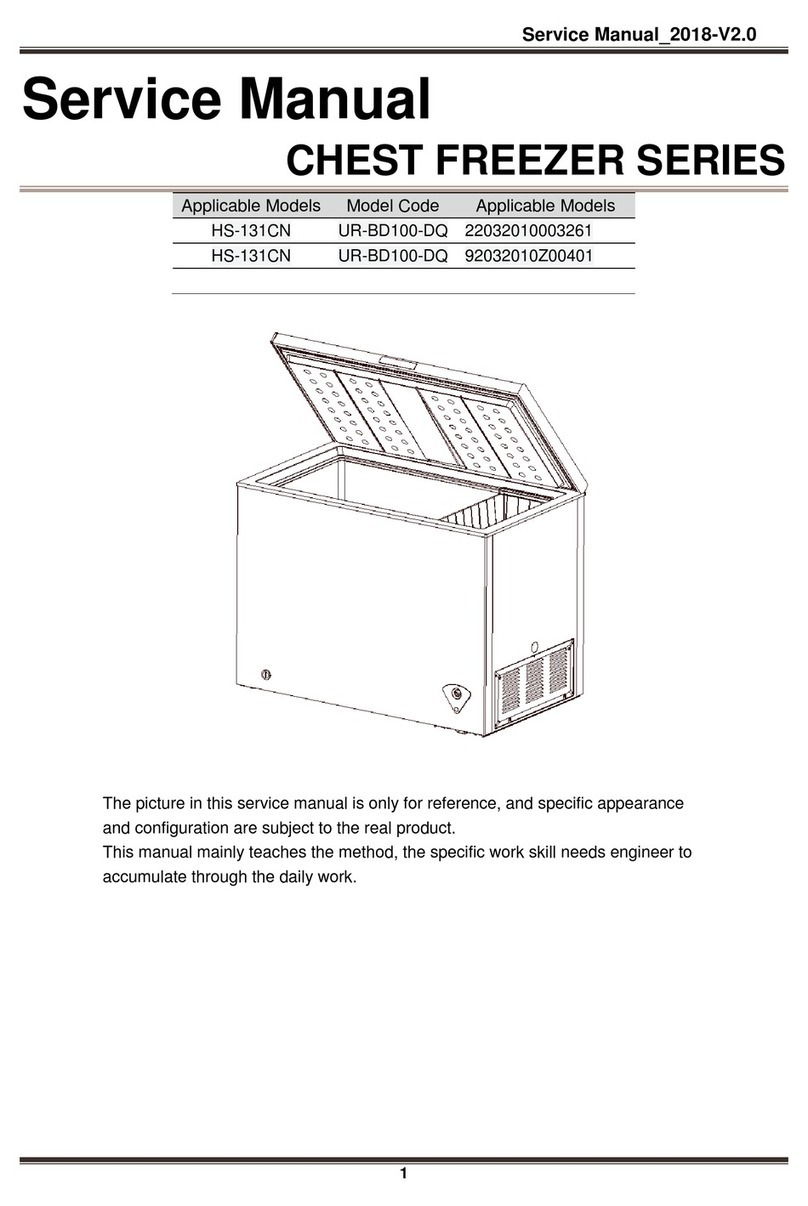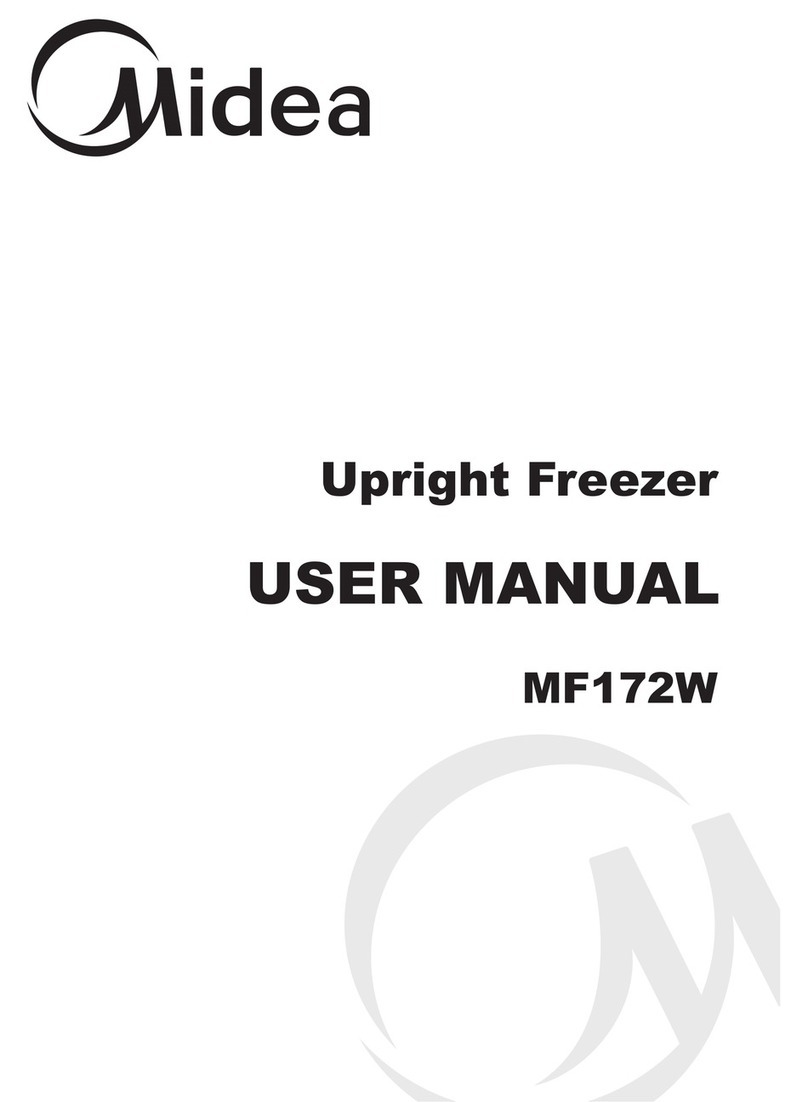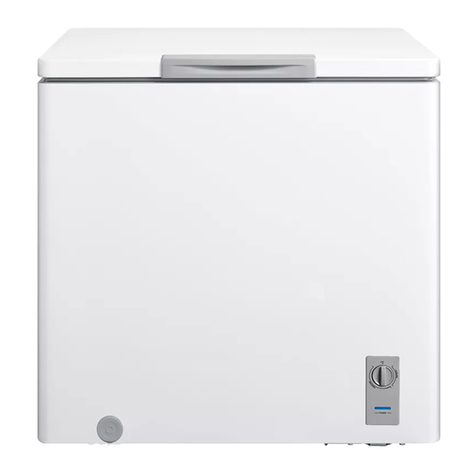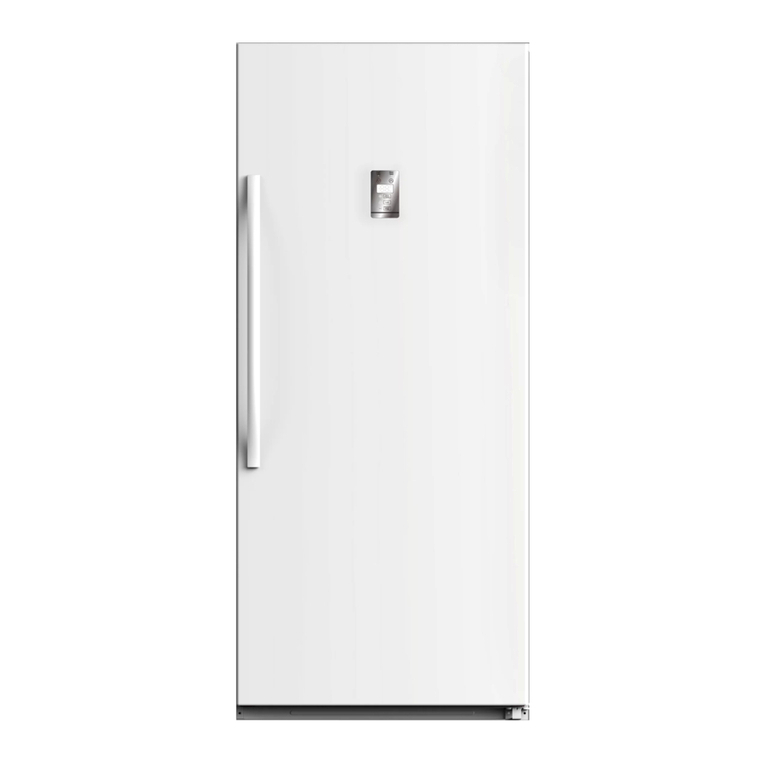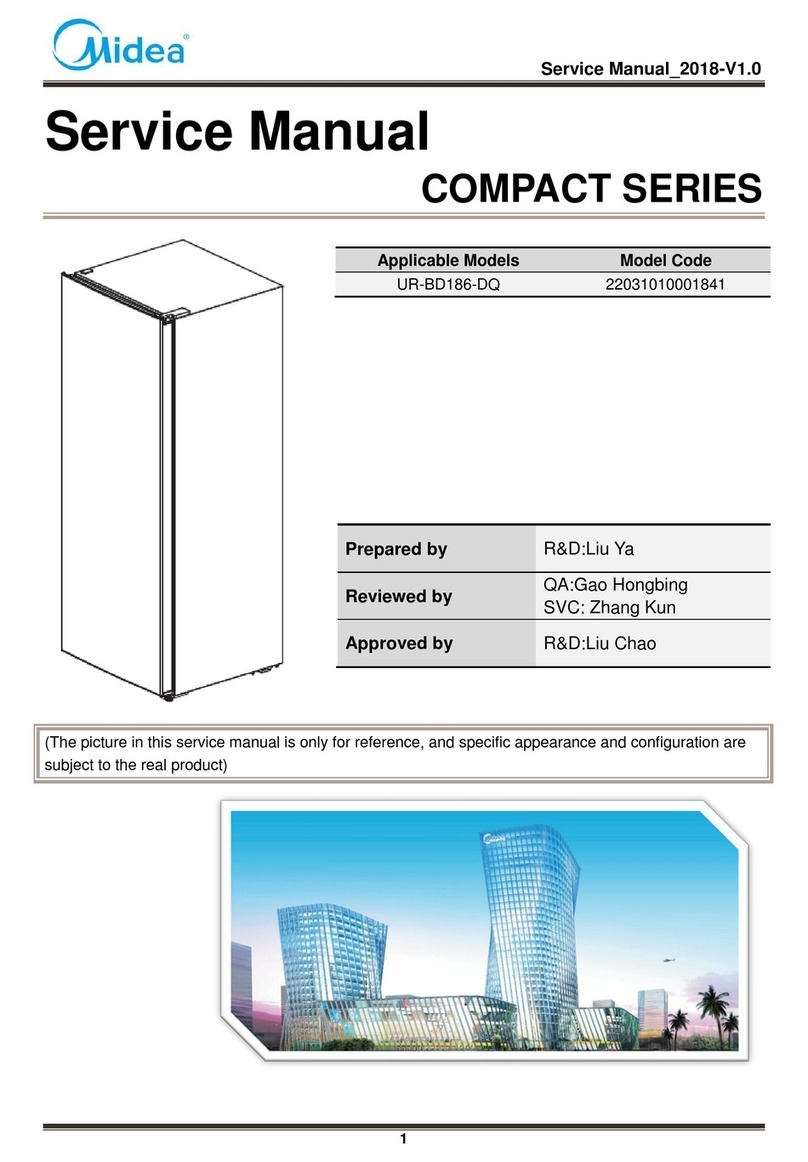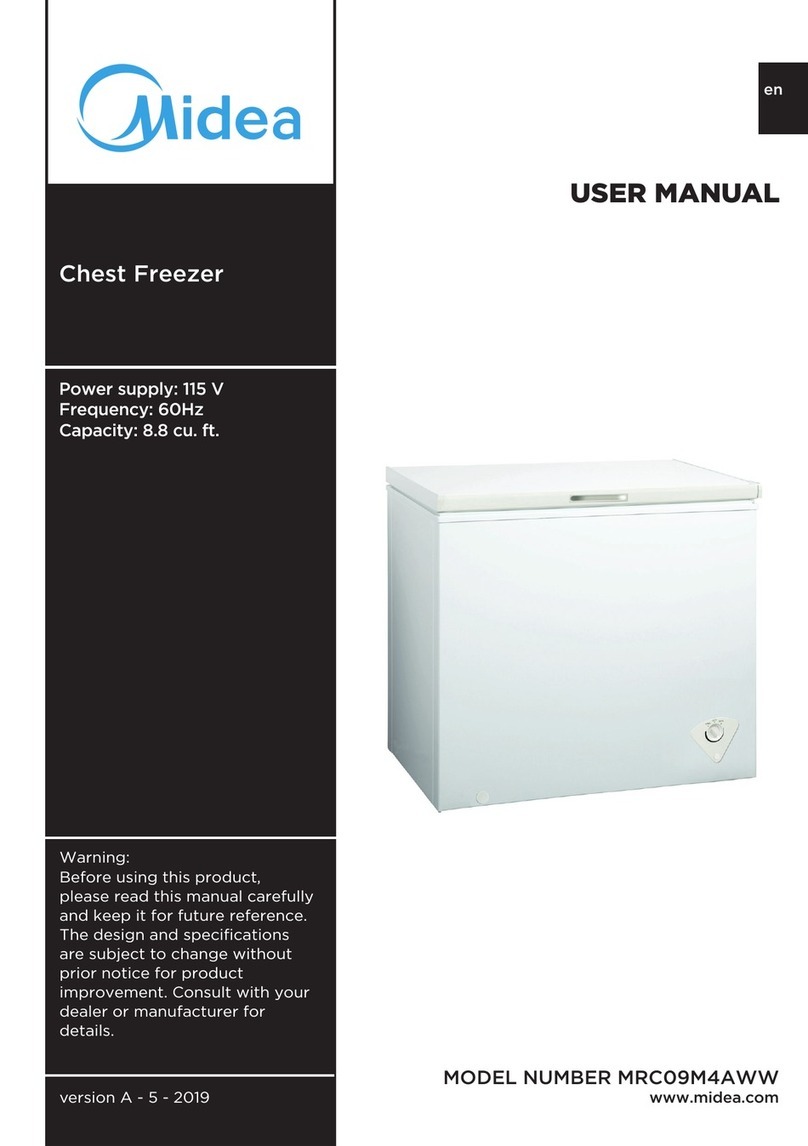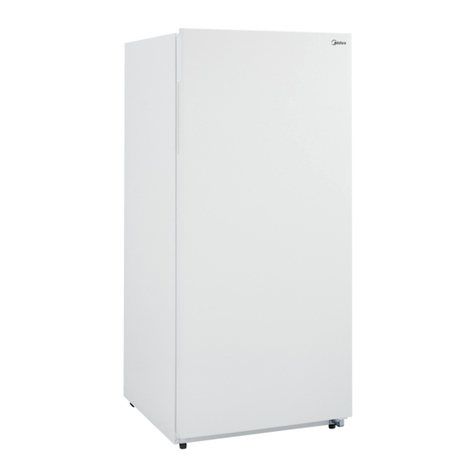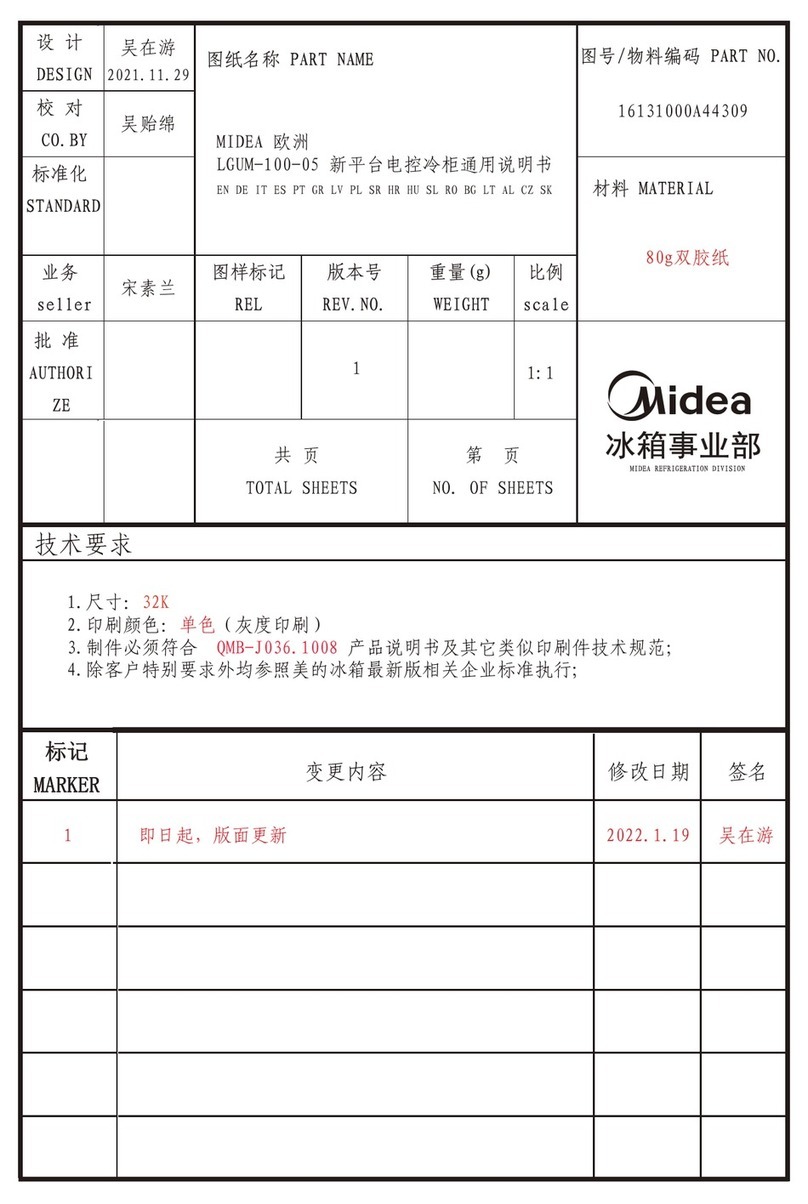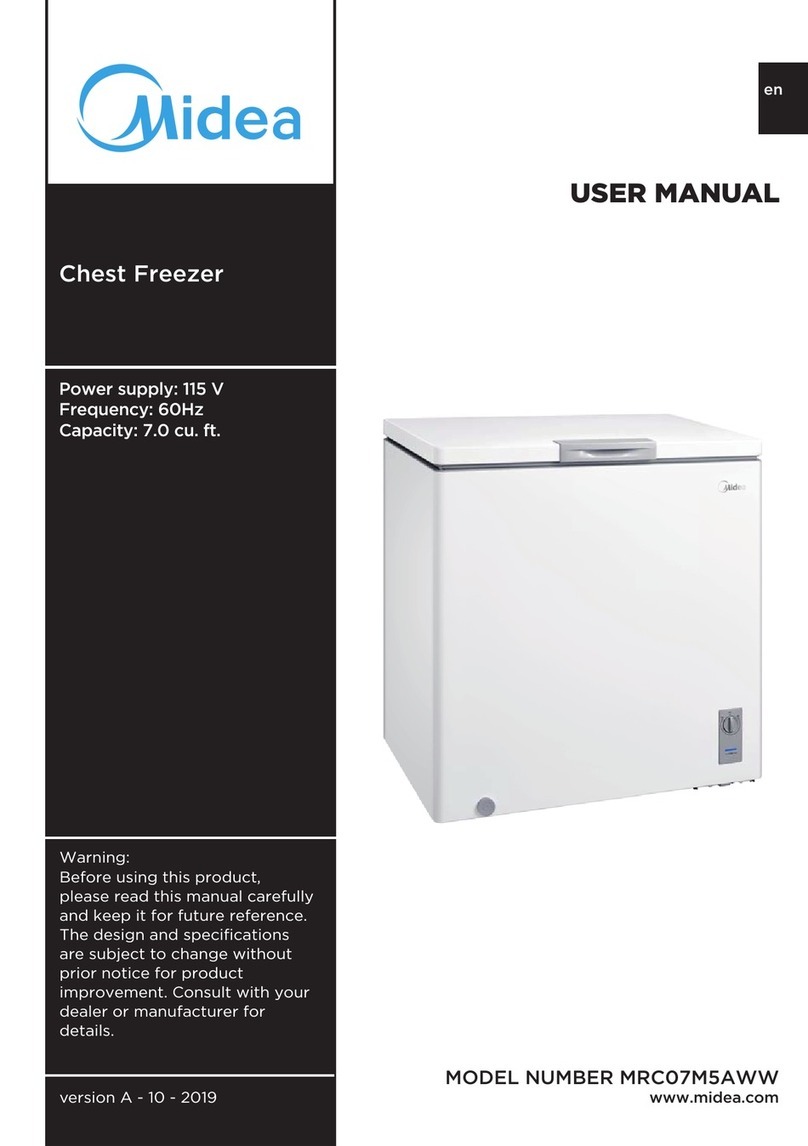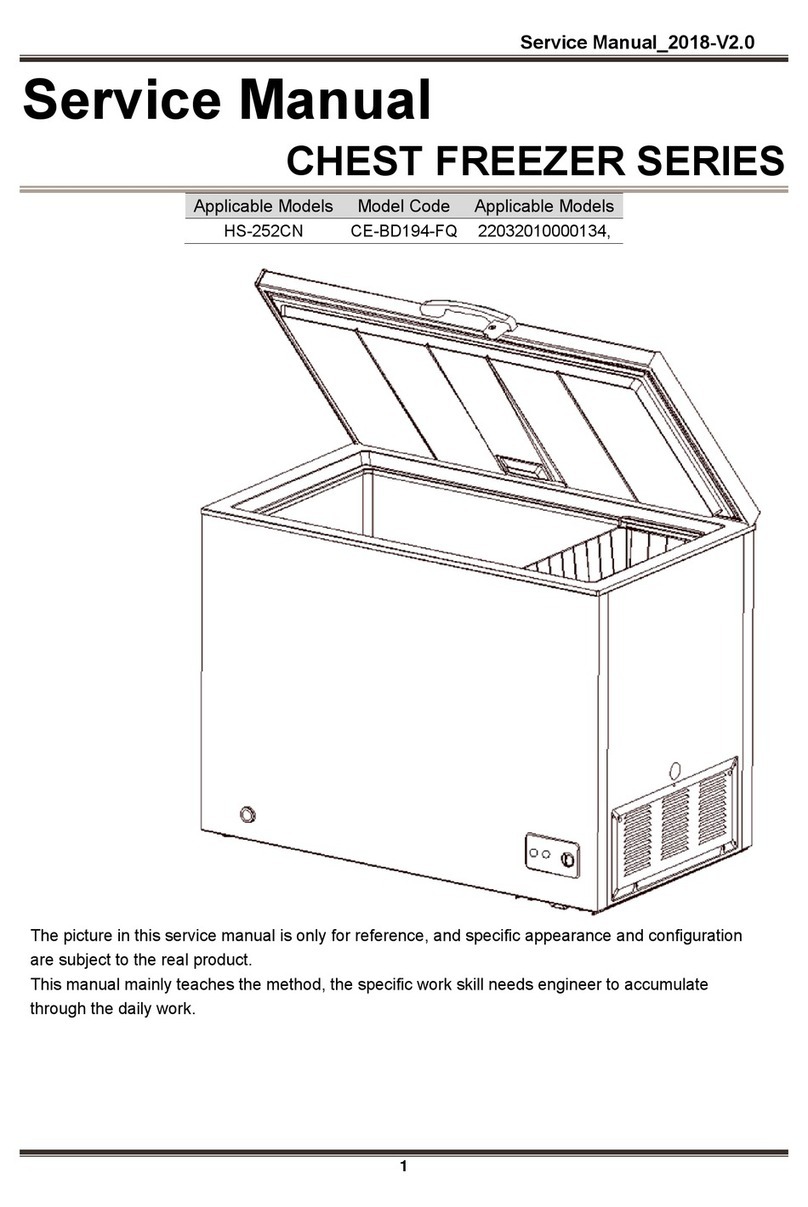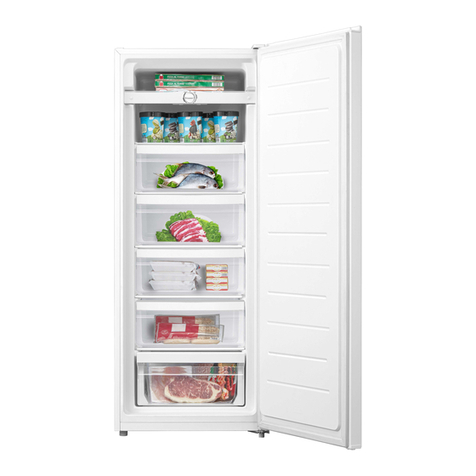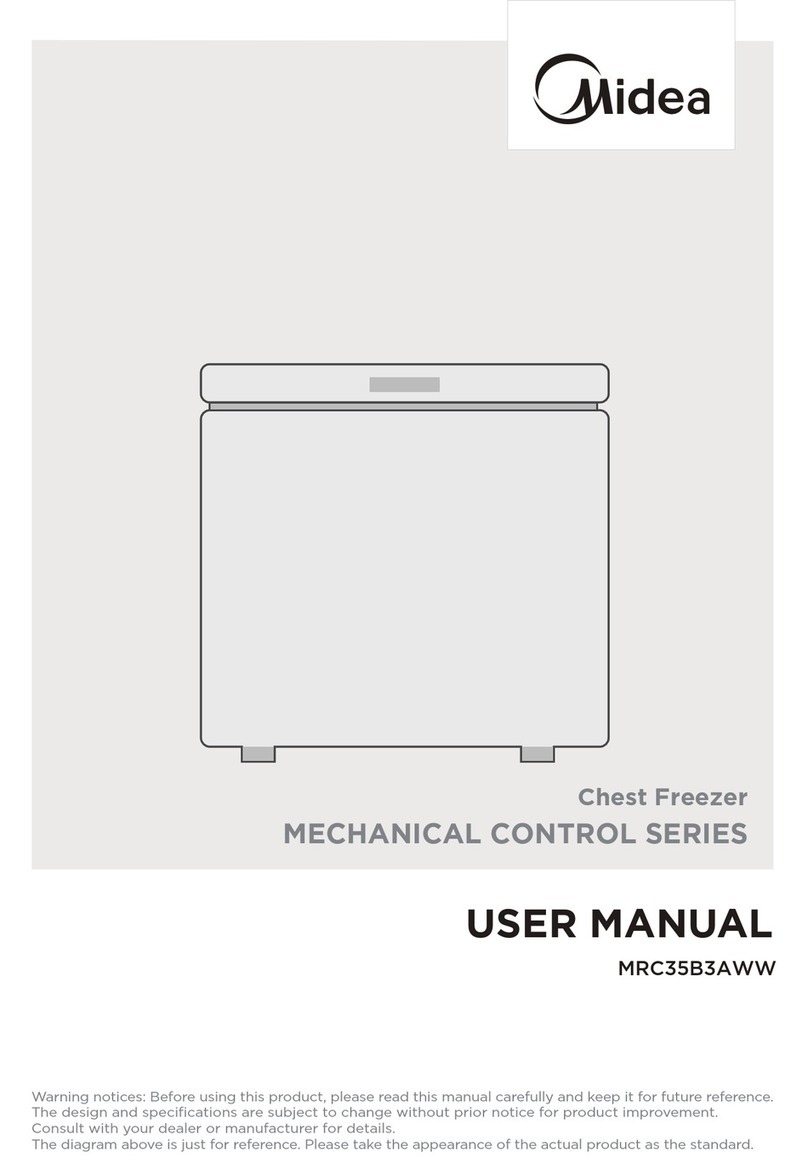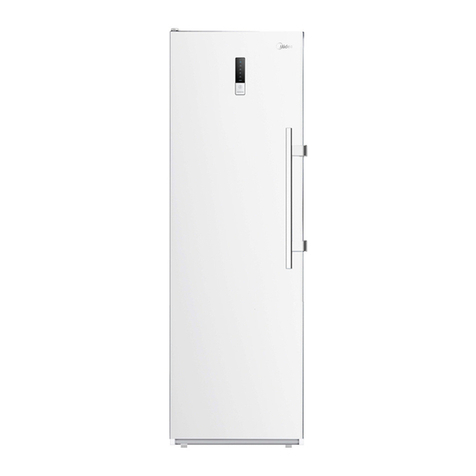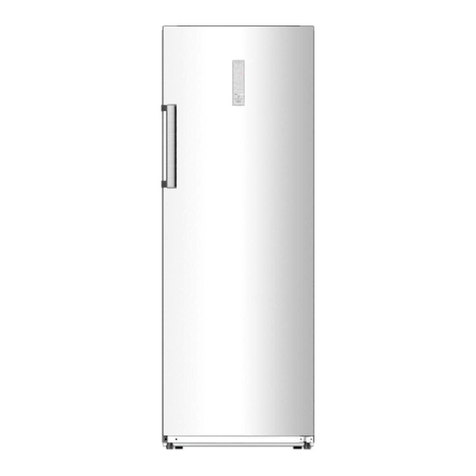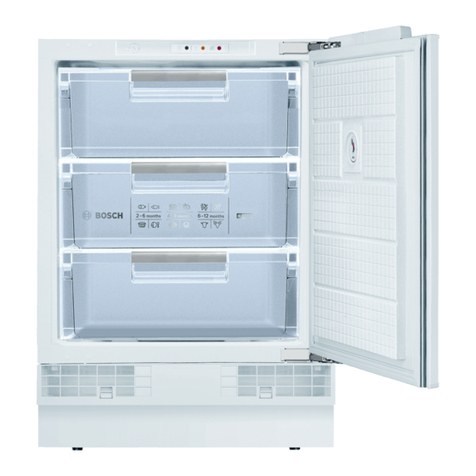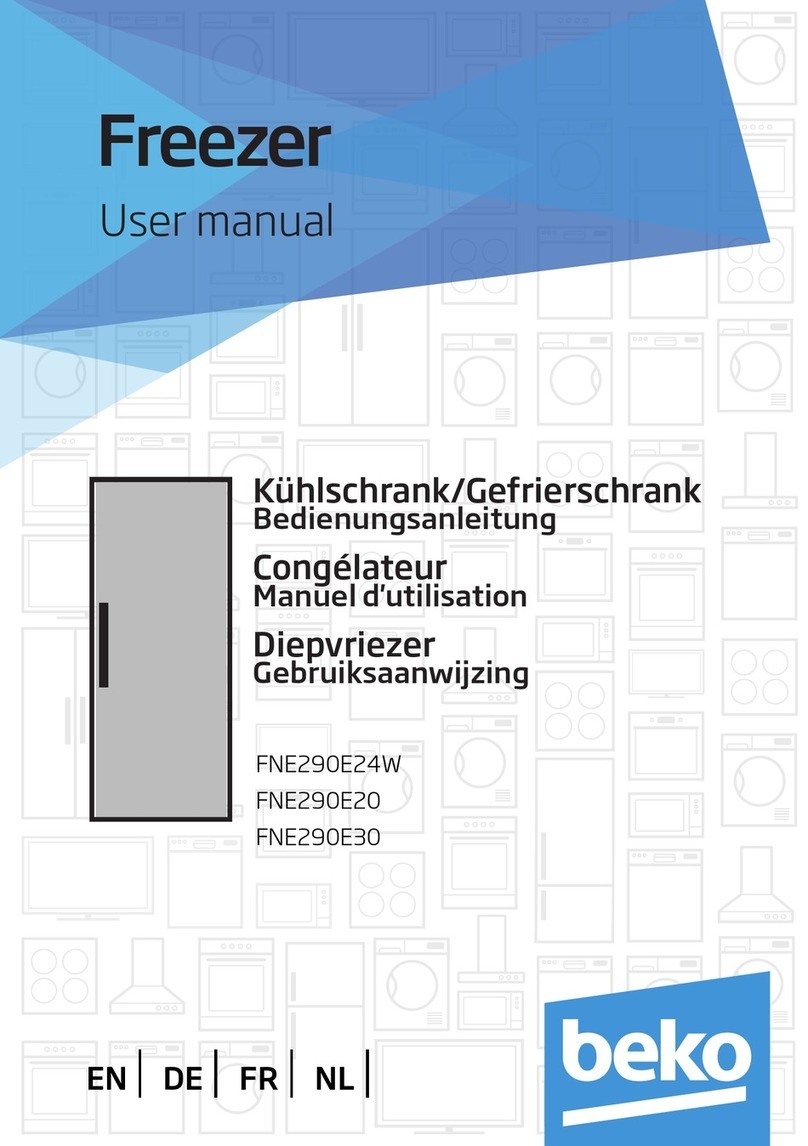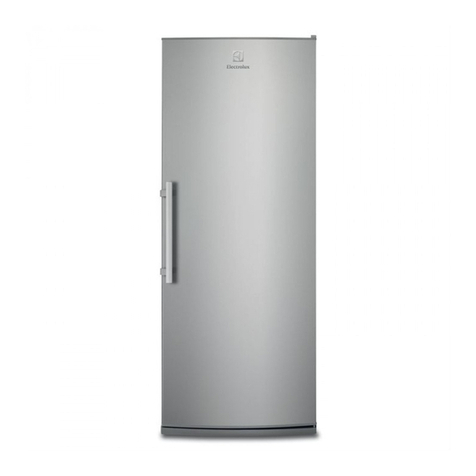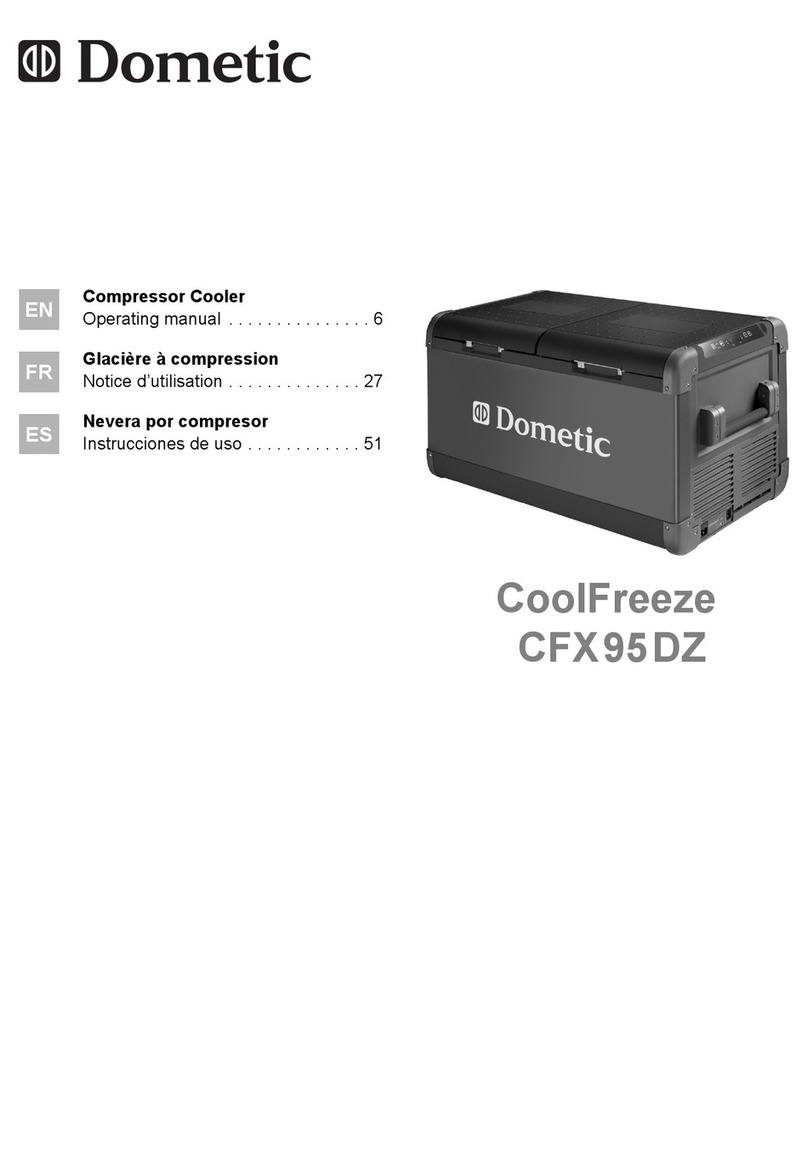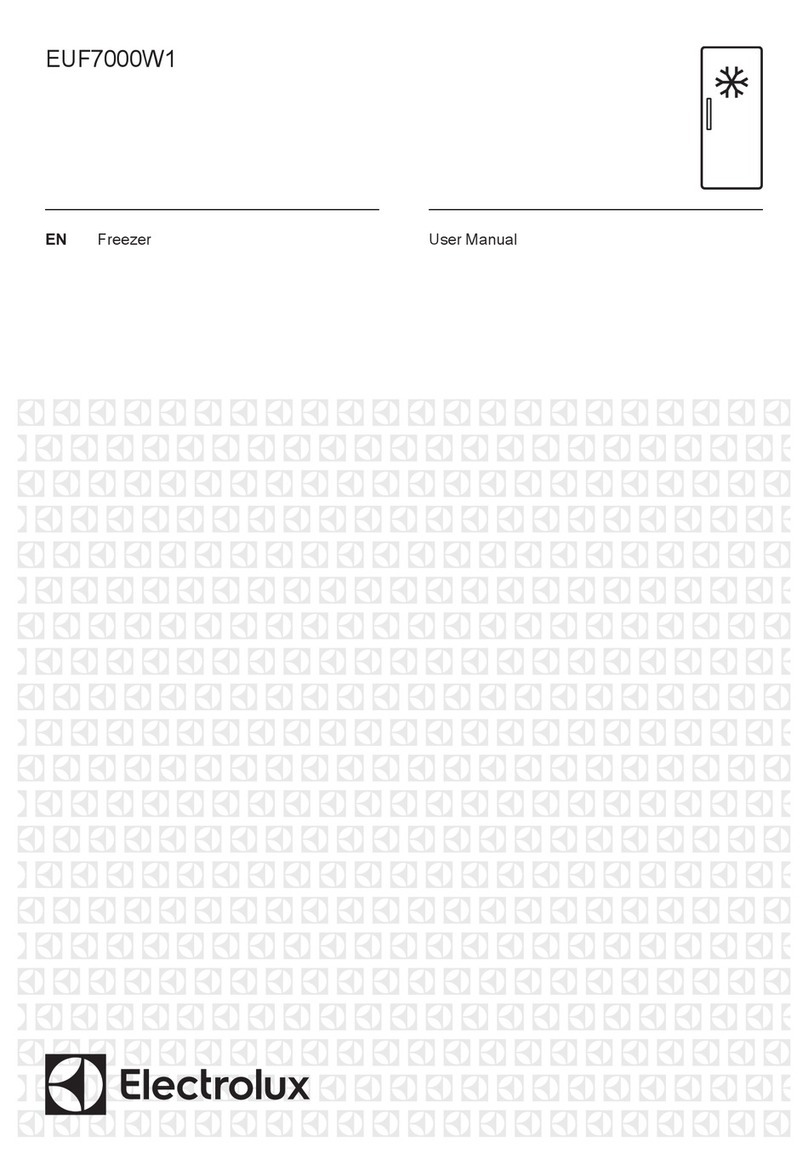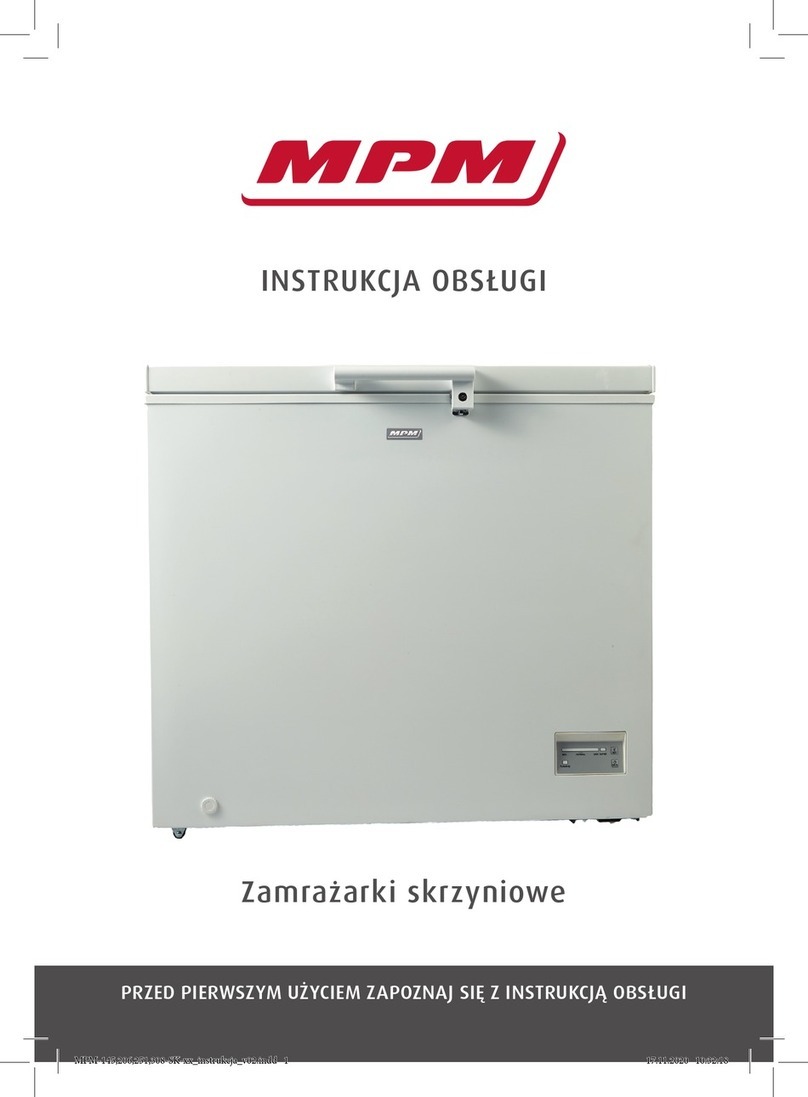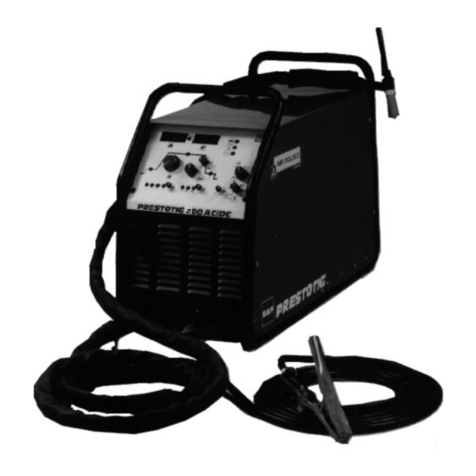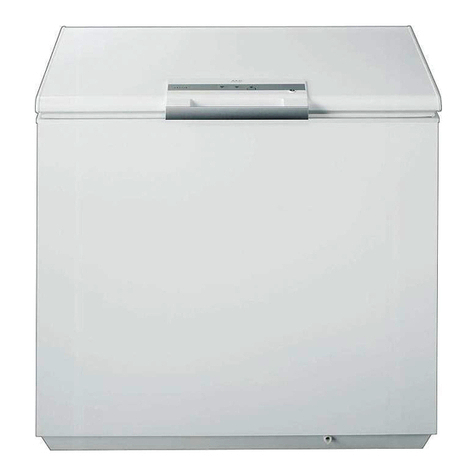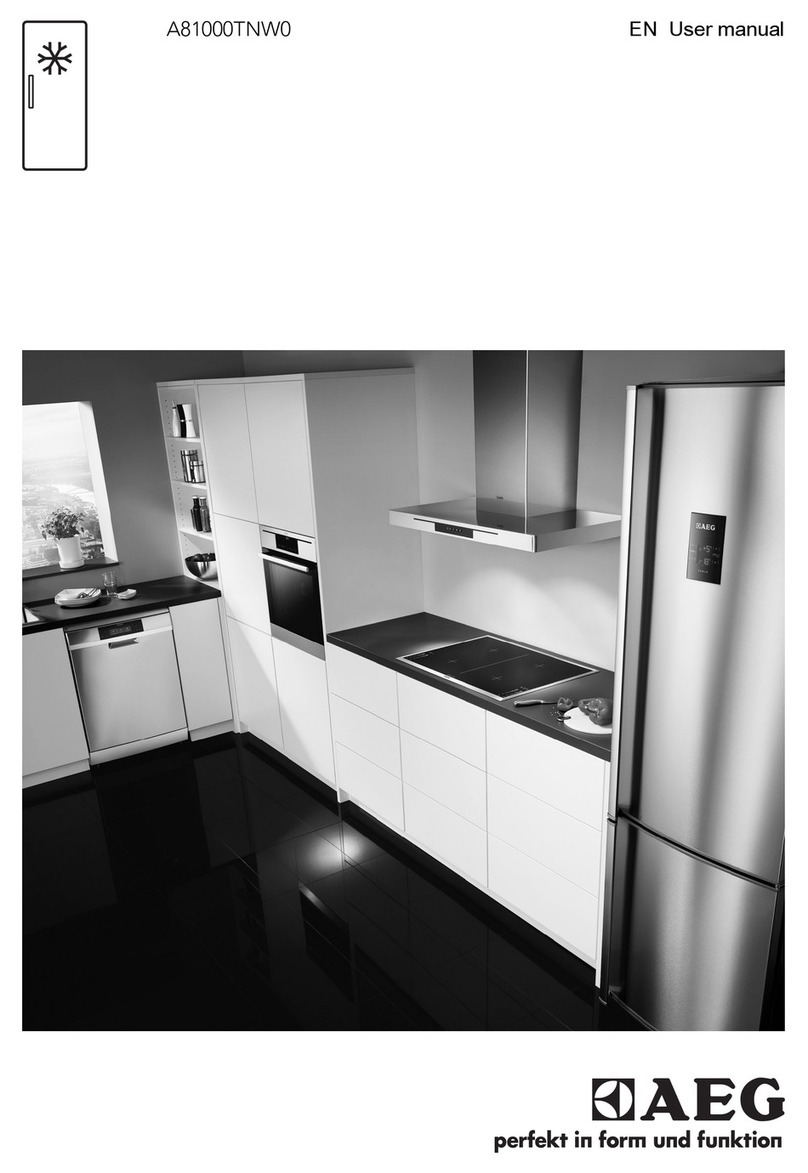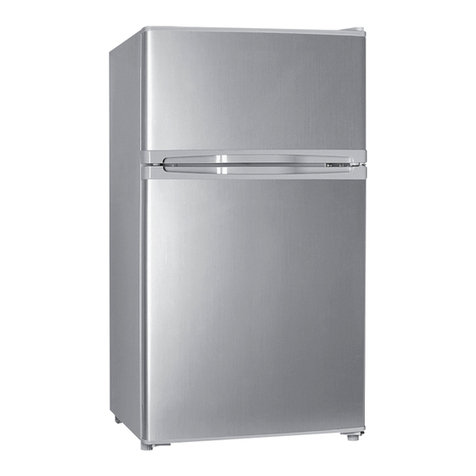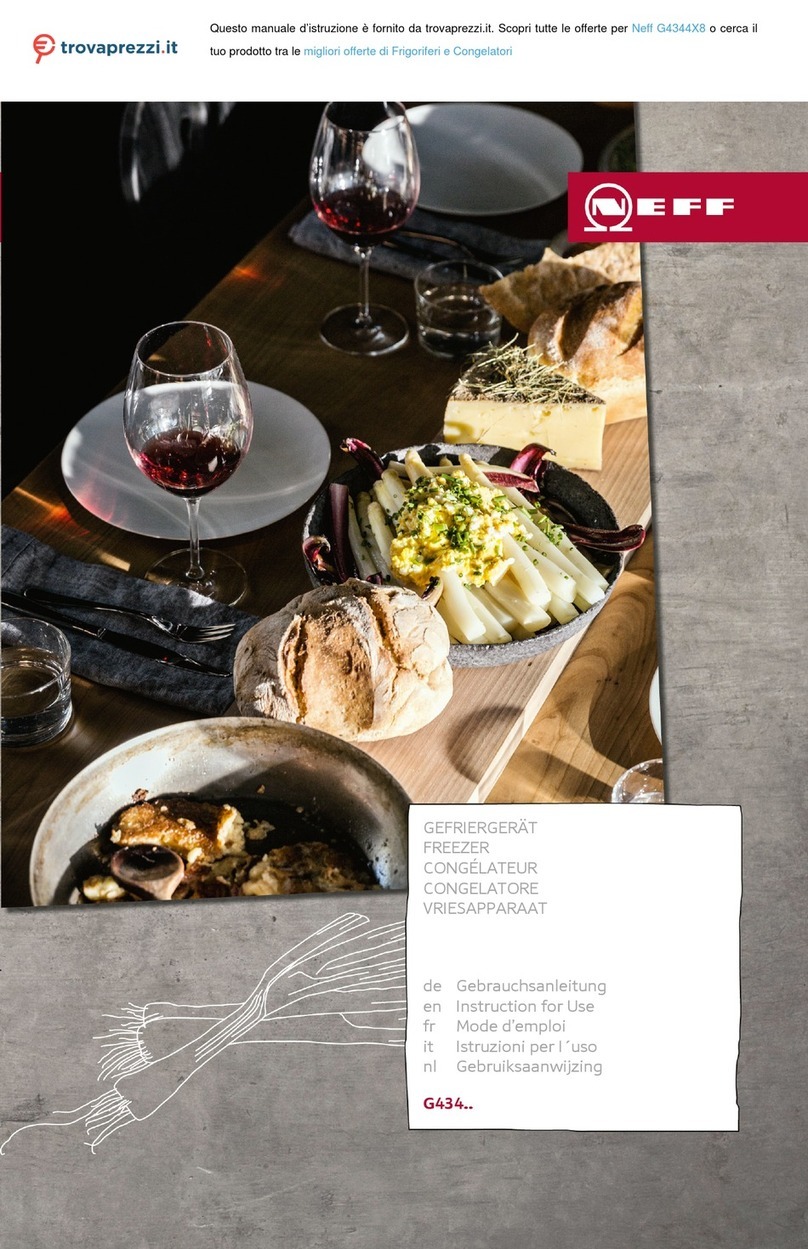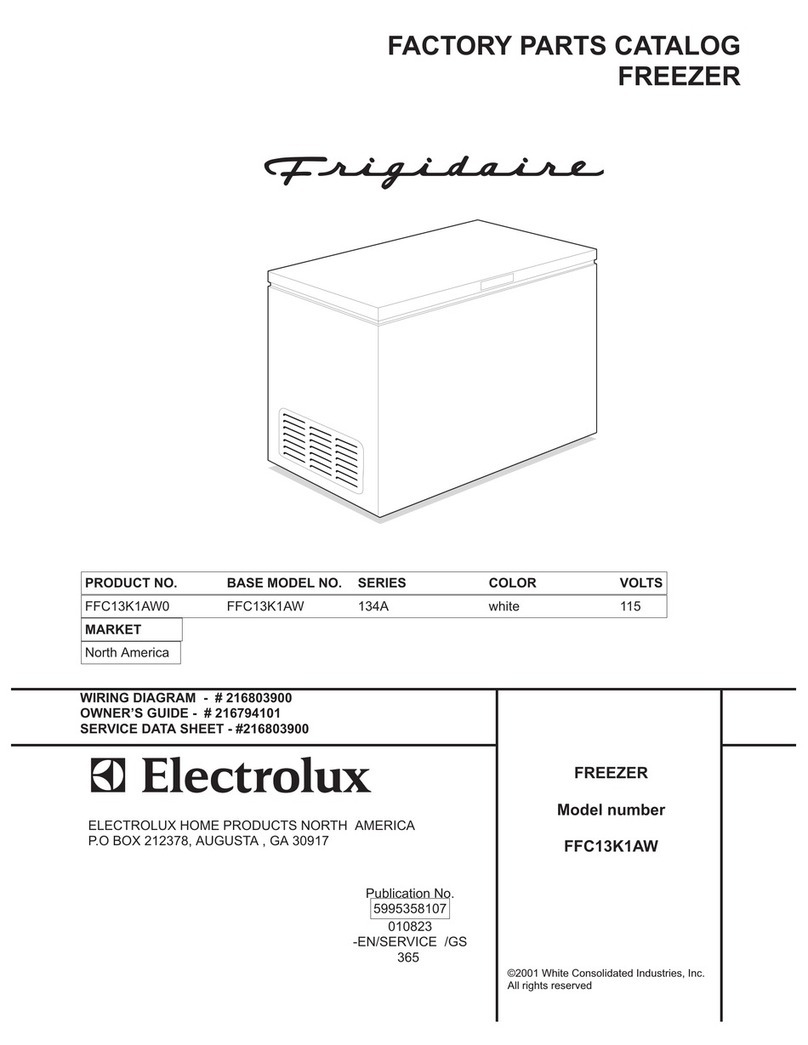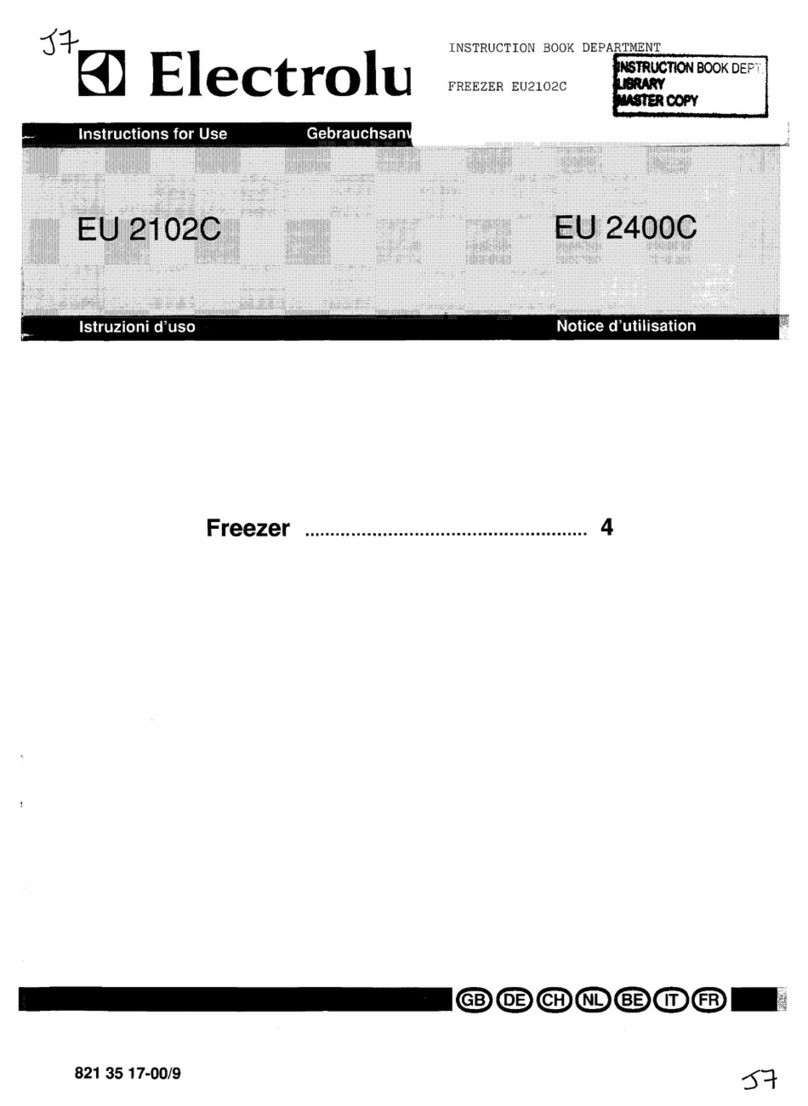
Do not put flammable, explosive, volatile and highly corrosive items
in the freezer to prevent damages to the product or fire accidents.
Do not place flammable items near the freezer to avoid fires.
Do not place items such as bottled or sealed container of fluid such
as bottled beers and beverages in the freezer to prevent bursts and
other losses.
This product is household freezer and shall be only suitable for
the storage of foods. According to national standards, household
freezer shall not be used for other purposes, such as storage
of blood, drugs or biological products.
1.5 Warnings related to placing items
Please remove the door of the freezer and shelves which shall be properly placed to avoid
accidents of children entering and playing in the freezer.
The freezer’s refrigerant and cyclopentane foam materials are combustible materials and
discarded freezers should be isolated from fire sources and can not be burned. Please
transfer the freezer to qualified professional recycling companies for processing to avoid
damages to the environment or other hazards.
1.7 Warnings related to disposal
1)Freezer might not operate consistently when sited for an extended period of time below the cold end
of the range of temperatures for which the freezer appliance is designed.
2)The fact that effervescent drinks should not be stored in food freezer compartments or cabinets or
in low-temperature compartments or cabinets, and that some products such as water ices should not
be consumed too cold;
3)The need to not exceed the storage time recommended by the food manufacturers for any kind of
food and particularly for commercially quick-frozen food in food-freezer and frozen-food storage
compartments or cabinets;
4)The precautions necessary to prevent an undue rise in the temperature of the frozen food while
defrosting the refrigerating appliance, such as wrapping the frozen food in several layers of newspaper.
5)The fact that a rise in temperature of the frozen food during manual defrosting, maintenance or
cleaning could shorten the storage life.
6)The necessity that, for doors or lids fitted with locks and keys, the keys be kept out of the reach
of children and not in the vicinity of the freezer appliance, in order to prevent children from being locked
inside.
1.6 Warnings for energy
5
Correct Disposal of this product:
This marking indicates that this product should not be disposed with other household
wastes. To prevent possible harm to the environment or human health from uncontrolled
waste disposal, recycle it responsibly to promote the sustainable reuse of material
resources. To return your used device, please use the return and collection systems or
contact the retailer where the product was purchased.They can take this product for
environmental safe recycling.
